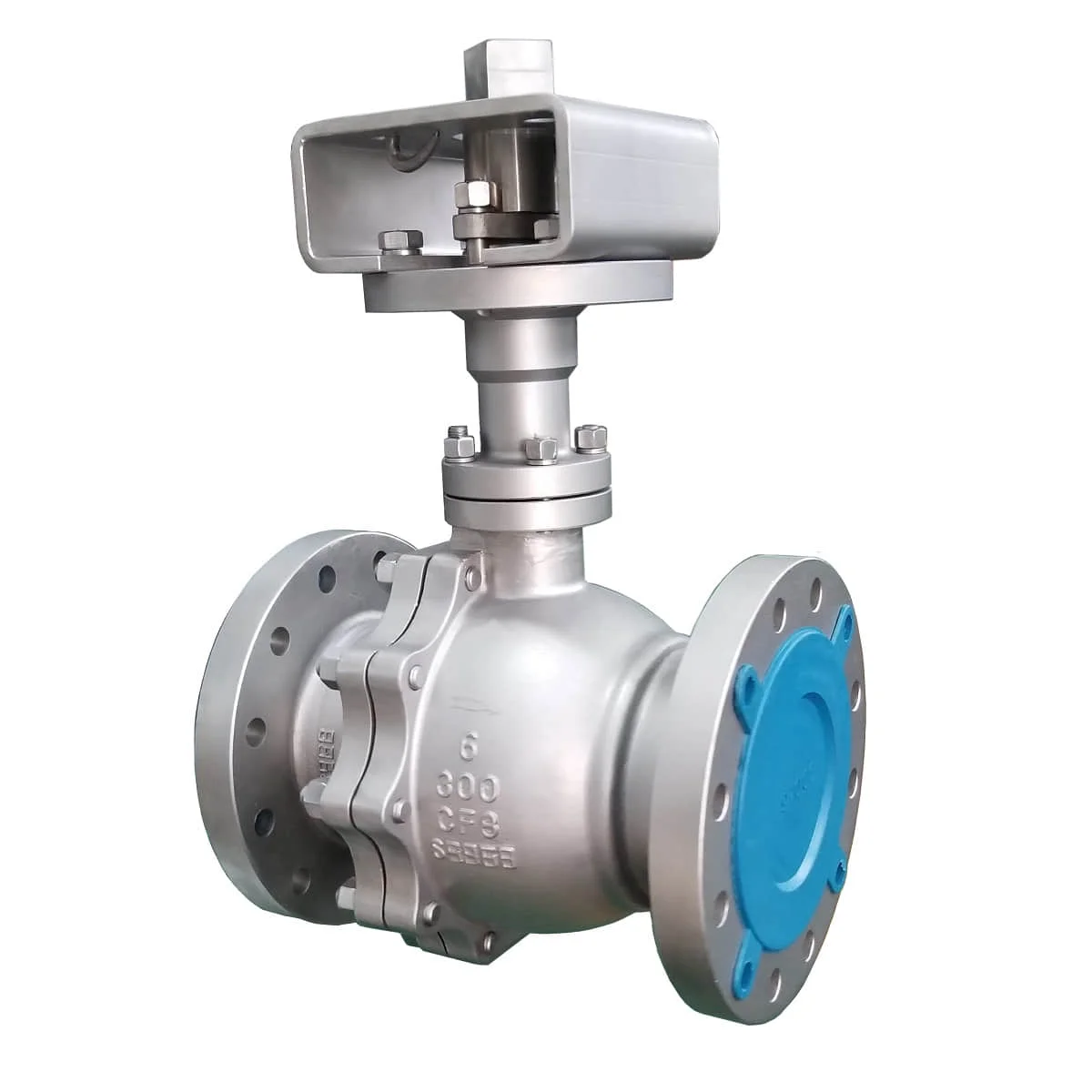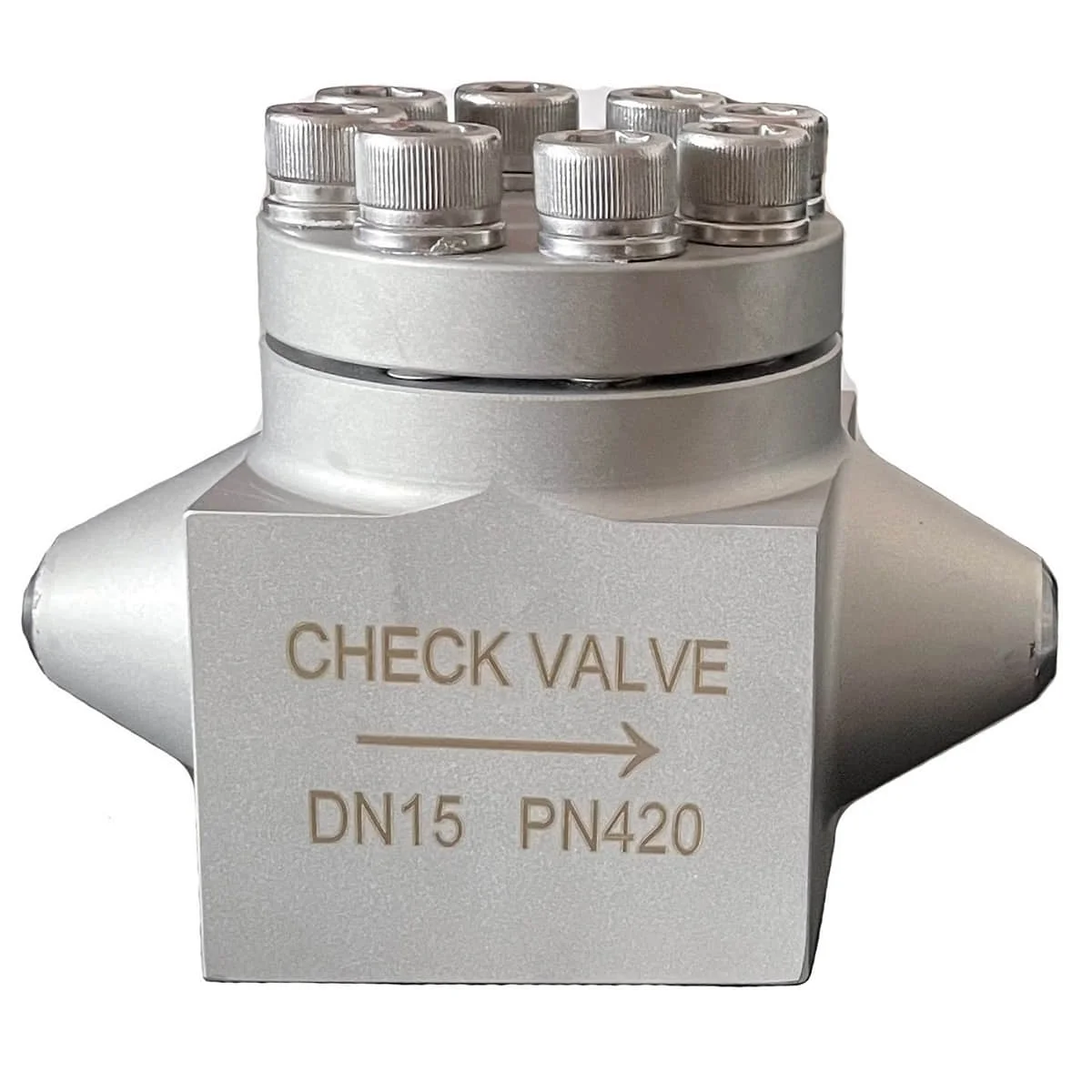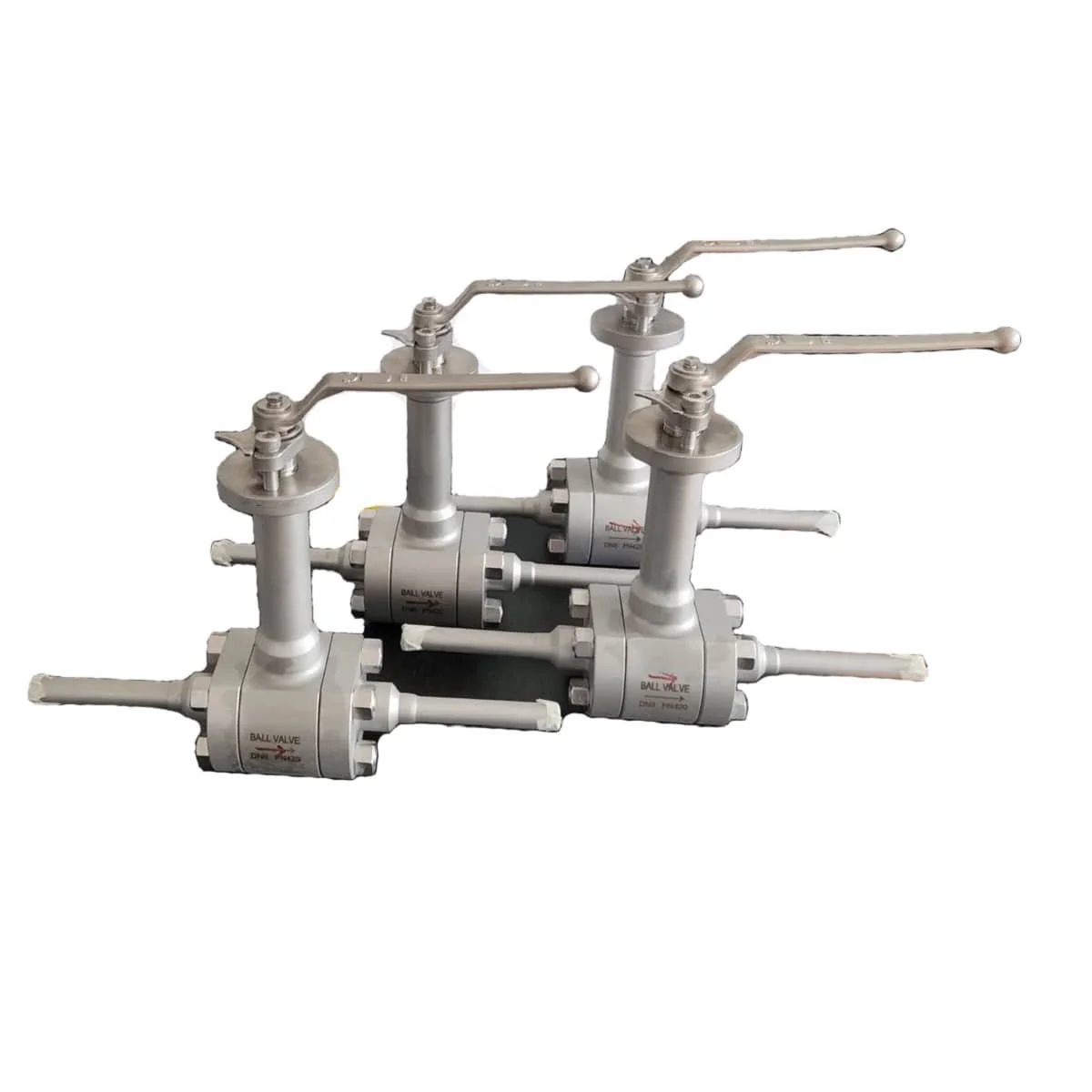
The 2-piece cryogenic floating ball valve provides reliable shutoff and flow control in extreme low-temperature lng systems, featuring extended bonnets and corrosion-resistant stainless steel for durability up to -196°c and pn40 pressure ratings.
The 2-piece cryogenic floating ball valve provides reliable shutoff and flow control in extreme low-temperature lng systems, featuring extended bonnets and corrosion-resistant stainless steel for durability up to -196°c and pn40 pressure ratings.
Below is a typical specification sheet for a cryogenic ball valve designed for low-temperature applications.
| Size | 6" |
|---|---|
| Rating | 300LB |
| End Connection | Flanged as per ASME B16.5 300LB |
| Temperature Range | -70 ℃ |
| Body and Bonnet | ASTM A351 CF8 |
| Ball | ASTM A182 F304 |
| Stem | ASTM A182 F304 |
| Seat | Spring Energized PCTFE |
| Actuation | Pneumatic Actuator |
The 2-Piece Cryogenic Floating Ball Valve is a high-performance isolation valve designed for extreme low-temperature applications, ensuring reliable shutoff and flow control in liquefied natural gas (LNG) and industrial cryogenic systems. Engineered with a compact two-piece body and floating ball mechanism, this cryogenic ball valve accommodates thermal contraction without compromising sealing integrity, making it ideal for LNG terminals, air separation plants, and cryogenic gas distribution. Constructed from austenitic stainless steels like ASTM A182 F316L, it offers superior corrosion resistance against moisture-induced pitting and embrittlement at temperatures down to -196°C, with extended bonnets to protect the stem packing from cryogenic exposure.
Compliant with BS 6364 for cryogenic valves and API 608 for ball valve design, the floating ball valve features a trunnion-supported or floating ball with primary and secondary seals (PTFE or PEEK) for bubble-tight shutoff per Class VI standards. Available in sizes from 1/2" to 6" (DN15 to DN150) with flanged (ASME B16.5), butt-weld (B16.25), or threaded ends, it supports pressure ratings up to PN40 (ANSI Class 150-600) and full vacuum service. The extended bonnet (250-500mm length) insulates the operator end from cryogenic temperatures, preventing ice formation and ensuring safe manual or actuated operation. Cryogenic testing at -196°C with liquid nitrogen confirms zero leakage, while fire-safe API 607 design adds reliability in flammable environments.
The valve’s lng ball valve configuration includes a low-emission stem packing with Grafoil or cryogenic-grade PTFE to minimize fugitive emissions, meeting TA-Luft and EPA standards. Its floating ball design self-adjusts under pressure for enhanced sealing in dynamic LNG transfer lines, with optional spring-loaded seats for low-pressure applications. Surface passivation and electropolishing enhance corrosion resistance, resisting oxidation in humid cryogenic conditions, while impact-tested materials (Charpy V-notch >27J at -196°C) prevent brittle failure. Nondestructive testing (RT, UT, PT) per ASME Section V ensures defect-free construction, with tensile strengths exceeding 515 MPa for durability under thermal cycling and pressure surges up to 40 bar.
Compared to three-piece or bolted bonnet valves, the 2-piece cryogenic floating ball valve offers a streamlined, lightweight design (up to 40% lighter) for easier installation in space-constrained LNG carriers or storage tanks, with reduced potential leak points for higher safety. Its quarter-turn operation provides quick response for emergency isolation, while customizable actuators (pneumatic or electric) support automation in SCADA systems. The valve’s ability to handle multiphase cryogenic flows without galling or seat extrusion makes it superior for regasification units, reducing maintenance intervals by 3-5 times in demanding low-temperature service.
Addressing challenges like thermal distortion, stem leakage, and material brittleness in low temperature ball valve applications, this industrial cryogenic valve incorporates double-block-and-bleed capabilities and secondary metal-to-metal backups for ultimate integrity. Its seamless integration with cryogenic piping standards (MSS SP-134) ensures global applicability, from offshore FPSOs to biomedical cryostorage. Whether isolating LNG loading arms or regulating helium in superconductors, the 2-Piece Cryogenic Floating Ball Valve delivers cost-effective, high-reliability performance, safety, and longevity for extreme low-temperature industrial operations.
Engineered for reliable shutoff in cryogenic LNG systems with corrosion-resistant materials.
Cryogenic valves are designed to handle extremely low temperatures and prevent leakage of sensitive cryogenic fluids. While various types exist, all share a basic feature: a tight shut-off to ensure safety and efficiency.
Triple-offset butterfly valves are ideal for cryogenic service due to their non-friction, metal-to-metal seal that ensures bubble-tight shut-off. They provide fast opening/closing and are well-suited for remote operation. Example: Durco TX3 with excellent shutoff, low torque, and reduced wear.
Featuring a spherical body and a disc that rotates 90° to the seat plane, these valves provide long-term sealing. However, they are not suitable for high flow rates due to erosion risks. A full Stellite trim is recommended to reduce wear since cryogenic fluids lack lubricity.
Widely used in liquid gas applications, double-seal ball valves (e.g., L&T, AMPO Poyam) provide excellent flow characteristics and a tight seal. Their design incorporates a vapor space that keeps gland packing near ambient temperature, reducing thermal conductivity. Best for unrestricted flow paths, though seals and the ball may wear over time.
Equipped with a wedge-shaped gate, these valves ensure minimal pressure drop when fully open, making them desirable for large-size applications. Brands like Poyam, L&T, and NEWCO Douglas-Chero are commonly used. However, gate valves are more difficult to actuate compared to butterfly valves and are prone to wear under frequent operation. An advantage: metal-to-metal sealing avoids cold flow issues seen in Teflon-sealed ball valves.

| Organization | Standard | Description |
|---|---|---|
| ANSI | American National Standards Institute | General industrial standards |
| API | American Petroleum Institute | Standards for oil and gas industry |
| ASME | American Society of Mechanical Engineers | Boiler and pressure vessel codes |
| BS | British Standards | UK national standards |
| GB, JB, HG | China Valve Standards | Chinese national and industry standards |
Upstream, midstream, and downstream operations, including drilling, refining, and transportation.
Handling corrosive and hazardous chemicals in various chemical plants.
Steam, water, and fuel systems in thermal, nuclear, and hydroelectric plants.
Municipal water supply, wastewater treatment, and industrial water management.
Heating, ventilation, and air conditioning systems in commercial and industrial buildings.
Sterile and hygienic applications, precise flow control in sensitive industries.

The cng lng cryogenic check valve ensures reliable...

The cng lng cryogenic ball valve ensures reliable ...